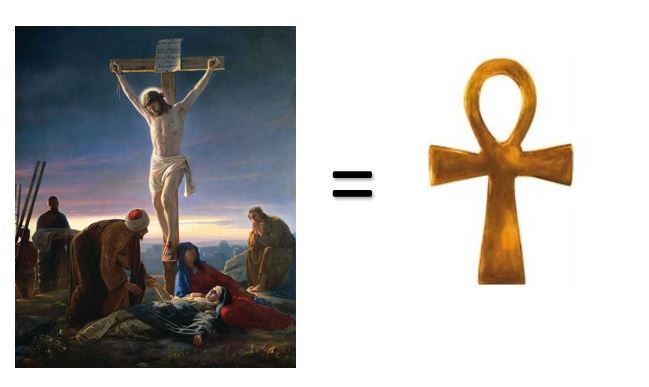Franciscan priest, Richard Rohr, is a mouthpiece for the new Christ Consciousness coming in. His daily meditations go out 400,000 people every day and who knows how many of those repost them or share them. Maybe a million people daily are able to read this amazing material that, at least from my perspective, is the Law of One coming to us in traditional terms. First, read what Ra says about the path of the Ankh and then read Rohr’s daily meditation.
Session 94.26: The cross formed … signifies that which is the nature of mind/body/spirit complexes [humans] in manifestation within your illusion. There is no experience which is not purchased by effort of some kind, no act of service to self or others which does not bear a price, to the entity manifesting, commensurate with its purity. All things in manifestation may be seen in one way or another to be offering themselves in order that transformations may take place upon the level appropriate to the action.
Session 93.24: We may indicate that the crux ansata is a part of the concept complexes of the archetypical mind, the circle indicating the magic of the spirit, the cross indicating that nature of manifestation which may only be valued by the losing. Thus the crux ansata is intended to be seen as an image of the eternal in and through manifestation and beyond manifestation through the sacrifice and transformation of that which is manifest.
Taken from:
https://cac.org/death-transformed-2019-04-26/
Jesus’ Resurrection
Death Transformed
Friday, April 26, 2019
Christianity—as well as Buddhism, other religions, and natural systems—suggests that the pattern of transformation, the pattern that connects, the life that Reality offers us is not death avoided, but death transformed. In other words, the only trustworthy pattern of spiritual transformation is death and resurrection. Christians learn to submit to trials because Jesus told us that we must “carry the cross” with him. Buddhists do it because the Buddha very directly said that “life is suffering.” Buddhism teaches us to skillfully discern the source of suffering, detach from our expectations and resentments, and end all suffering.
Death and life are two sides of the same coin; you cannot have one without the other. Each time you surrender, each time you trust the dying, your faith is led to a deeper level and you discover a Larger Self underneath. You decide not to push yourself to the front of the line, and something much better happens in the back of the line. You let go of your narcissistic anger, and you find that you start feeling much happier. You surrender your need to control your partner, and finally the relationship blossoms or ends. Yet each time it is a choice—and each time it is a kind of dying. It seems we only know what life is when we know what death is.
The mystics and great saints were those who had learned to trust and allow this pattern, and often said in effect, “What did I ever lose by dying?” Or try Paul’s famous one-liner: “For me to live is Christ and to die is gain” (Philippians 1:21). Now even scientific studies, including those of near-death experiences, reveal the same universal pattern. Things change and grow by dying to their present state, but each time it is a risk. We always wonder, “Will it work this time?” So many academic disciplines are coming together, each in their own way, to say that there’s a constant movement of loss and renewal at work in this world at every level. It seems to be the pattern of all growth and evolution. To be alive means to surrender to this inevitable flow. It’s the same pattern in every atom, in every human relationship, and in every galaxy. Indigenous peoples, Hindu gurus, Buddha, Moses, Muhammad, and Jesus all saw it clearly in human history and named it as a kind of “necessary dying.”
If this pattern is true, it has been true all the time and everywhere. Such seeing did not just start two thousand years ago. All of us have to eventually learn to let go of something smaller so something bigger can happen. But that’s not a religion—it’s highly visible truth. It is the Way Reality Works.
Yes, I am saying that the way things work and Christ are one and the same. This is not a religion to be either fervently joined or angrily rejected. It is a train ride already in motion. The tracks are visible everywhere. You can be a willing and happy traveler. Or not.
References:
Adapted from Richard Rohr, The Universal Christ: How a Forgotten Reality Can Change Everything We See, Hope For, and Believe (Convergent: 2019), 218-219; and
Dying: We Need It for Life in Richard Rohr on Transformation: Collected Talks, Volume 1, disc 4 (Franciscan Media: 2002), CD.

